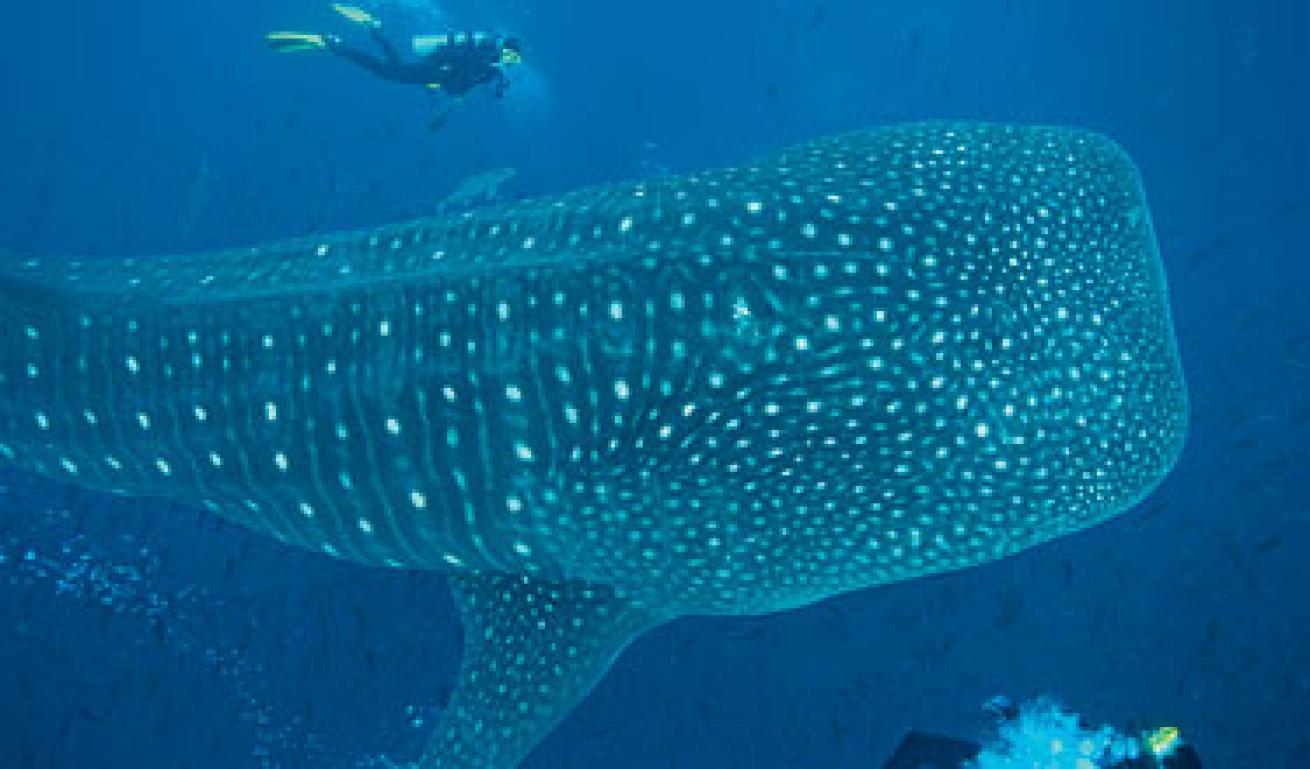Galapagos

Whale sharks, a pod of dolphins, sea lions, a school of hammerheads, a large Galapagos shark, green sea turtles, hundreds of almaco jacks, blue jacks, bacalao, a school of leather bass, Pacific dog snappers, masses of bluestriped chub, yellowfin tuna and blue runners. A lifetime of sightings? Nope. A week's worth? Try again. How about a single dive? Such is life at many of the dive sites in the Galapagos archipelago.
Most divers choose live-aboards when visiting the islands as they cover the most ground and allow you to maximize your time, both on land and at sea. The dive sites are so close to one another that most live-aboards travel after dinner, allowing you to wake up at a new anchorage almost every day. Each island provides several dive sites and unique experiences. The conditions can be iffy: The water can be cool and murky, the currents and surge can be unpredictable. But one thing's for sure: This is truly one of the most exciting advanced dive destinations in the world.
Dive In
Weather: The islands experience subtropical weather with average temps in the low 70s.
Average Water Temp: Varies widely throughout the islands. Temps can range from 65 to 80 degrees on the surface, but drop to the 50s at depth.
Average Visibility: Vis averages 75 feet, but can range from a few feet to more than 100, depending on conditions.
Travel Savvy: U.S. and Canadian citizens must bring a passport, but don't need a visa. There is a $100 entry fee to visit the Galapagos National Park. You'll pay a $26 departure tax from Guayaquil and $40.80 from Quito.
Destination Links: www.galapagos.org, www.gct.org, www.darwinfoundation.org.

Whale sharks, a pod of dolphins, sea lions, a school of hammerheads, a large Galapagos shark, green sea turtles, hundreds of almaco jacks, blue jacks, bacalao, a school of leather bass, Pacific dog snappers, masses of bluestriped chub, yellowfin tuna and blue runners. A lifetime of sightings? Nope. A week's worth? Try again. How about a single dive? Such is life at many of the dive sites in the Galapagos archipelago.
Most divers choose live-aboards when visiting the islands as they cover the most ground and allow you to maximize your time, both on land and at sea. The dive sites are so close to one another that most live-aboards travel after dinner, allowing you to wake up at a new anchorage almost every day. Each island provides several dive sites and unique experiences. The conditions can be iffy: The water can be cool and murky, the currents and surge can be unpredictable. But one thing's for sure: This is truly one of the most exciting advanced dive destinations in the world.
Dive In
Weather: The islands experience subtropical weather with average temps in the low 70s.
Average Water Temp: Varies widely throughout the islands. Temps can range from 65 to 80 degrees on the surface, but drop to the 50s at depth.
Average Visibility: Vis averages 75 feet, but can range from a few feet to more than 100, depending on conditions.
Travel Savvy: U.S. and Canadian citizens must bring a passport, but don't need a visa. There is a $100 entry fee to visit the Galapagos National Park. You'll pay a $26 departure tax from Guayaquil and $40.80 from Quito.
Destination Links: www.galapagos.org, www.gct.org, www.darwinfoundation.org.






